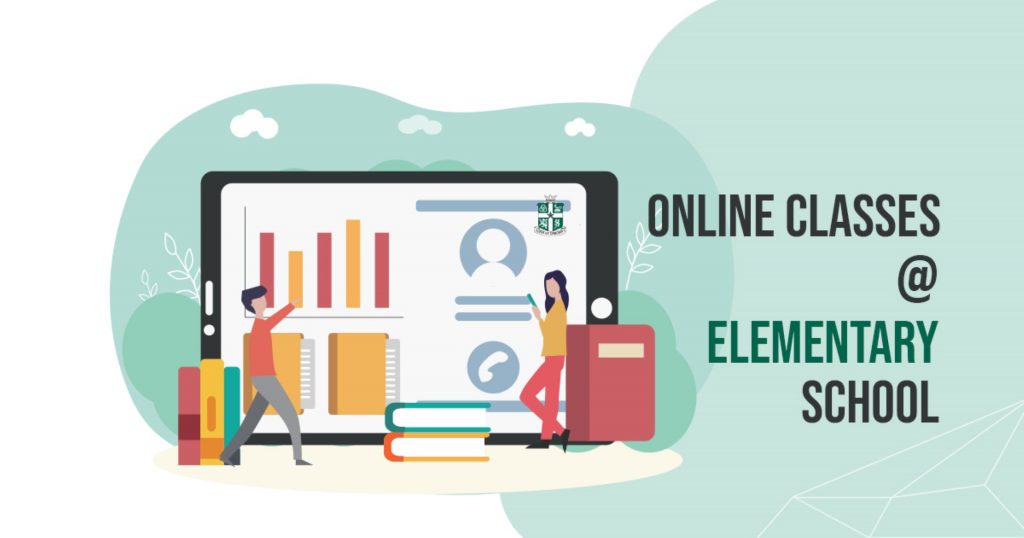
MENUCLOSE MENU

What is a classroom?
When you picture a classroom in your mind, what is it that you see? Rows of desks with pupils behind them, a teacher at the front of the room talking? Maybe you see groups of students working purposefully on a task. Possibly you see some students causing trouble and distracting other members of the class…
What if we reframe the question: picture a successful classroom, what do you see now? Children engaged and happy, working together on a meaningful task, adults supporting the students with their learning, the atmosphere positive and a sense of community permeating the room. Whatever it is you see, I am willing to bet that you don’t see a teacher in a room on their own talking to a laptop. And yet – this is the situation that we find ourselves in. This time, for the first time ever, starting a school year with online classrooms.
So how do we recreate that atmosphere, those intangibles that make a classroom special, that make a classroom successful, that make a classroom an inclusive community?
The key to all of this is relationships.
Nothing has brought the fundamental need for positive teacher-student relationships into the foreground quite like the pandemic that we are living through. The mantra that Mrs Quigley used to reiterate to all of us before the start of a new school year was: “Connection before correction” and that is more important now than ever before. We are hard-wired to connect. Through connections, humans thrive and get their emotional needs met. When a child feels seen, heard, validated and respected, their desire to engage and willingness to take on risk during the learning process increases dramatically. In their seminal text Visible Learning and the Science of How We Learn, John Hattie and Gregory Yates consider positive teacher relationships crucial to student learning: “Learning for many students is a risky business. The positive teacher-student relationship is thus important not so much because this is worthwhile in itself, but because it helps build the trust to make mistakes, to ask for help, to build confidence to try again, and for students to know they will not look silly when they don’t get it the first time.”
If these relationships are the key to a successful classroom, how are we building them without the opportunity to be physically present in the same space? Over the past three weeks this is something that teachers in the Elementary School have been thinking about to ensure we start this year in the most positive way possible for all of our community: students, parents, and teachers. They have been developing ideas for creating authentic connections, meaningful relationships and classroom camaraderie through the screen.
In Year 3, Ms Thompson and her team have been thinking about ways to create class communities by using Seesaw. All the pupils wrote a sentence about themselves and illustrated it, then shared it on the class blog. They have been learning to make comments and respond to each other by showing the virtues of Kindness and Unity. They have also created ‘rules posters’ to help learn to be respectful and safe in Zoom classes. These consistent expectations allow students to focus on their learning and the enjoyment of lessons.
At the top end of the Elementary School, Mr Ruxton and his team in Year 6 have been using a variety of strategies to welcome students back to school and help develop their independence.
Something as simple as saying good morning to each child individually during the first lesson of the day, and after lunch, as they log in to Zoom lessons goes a long way to making students feel as ‘normal’ as possible. Year 6 have also been giving the pupils opportunities to participate in SOLE (Self Organised Learning Environment) activities that promote student led collaboration. This supports the building of relationships between students as well as enhancing their learning.
At the other end of Elementary School, Ms Whitworth and her Year 1 team have been using the Seesaw blog to establish their class community. The children share things that are of interest to them or projects that they’ve worked on at home for the class to see and comment on. They also made ‘All About Me’ books which were shared on the blog. The children were tasked with visiting the blog to find out facts about their friends ready for a class ‘Kahoot’ quiz at the end of the week. They performed admirably in this quiz, which shows how engaged they are with the platform, and how excited they were to learn about each other.
Although we may not be present in that physical environment that comes to mind when you picture a ‘classroom’ I hope you now have an idea of the ways that we are enabling our students to be members of a successful classroom, and how we are creating that feeling of belonging to a community, so that they can proudly state: I am a Lasallian.
